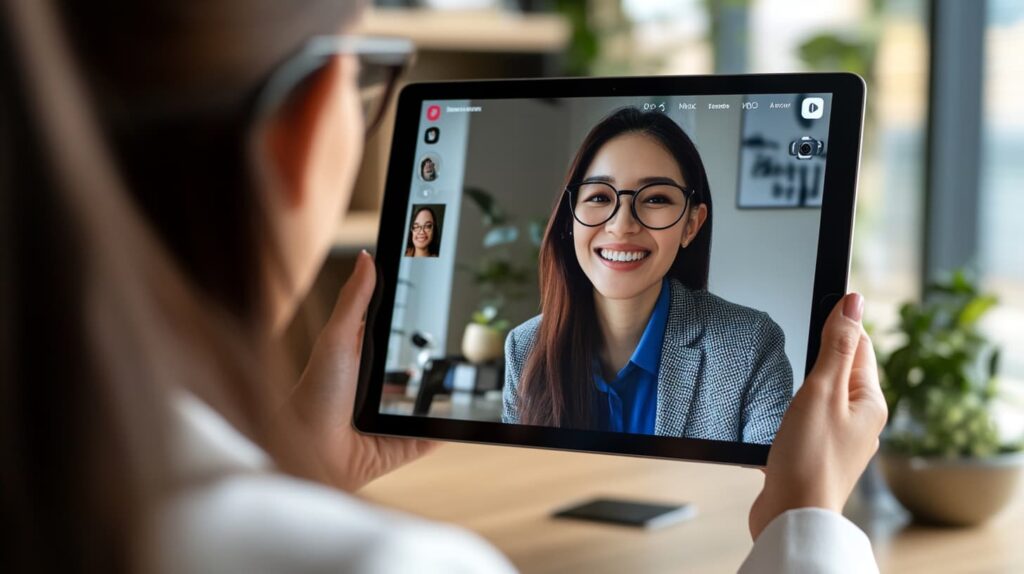The hiring landscape has changed dramatically in recent years, and one of the biggest shifts has been the rise of the virtual interview. Whether you’re applying for a remote job or going through the first round of a hybrid hiring process, online interviews are now the norm rather than the exception. And while they may save you a trip across town, they come with their own set of challenges.
Preparing for a virtual interview involves much more than just turning on your laptop and clicking a Zoom link. To make a strong impression, you need to master three key areas: your psychological mindset, your technical setup, and your on-camera behavior. Together, these elements help you project confidence, communicate clearly, and stand out in a crowded digital job market.
1. The Psychology of Confidence and Focus
An interview—whether online or in person—is partly a performance. You want to appear confident, competent, and composed. But a virtual setting can sometimes make it harder to connect emotionally with your interviewer, and many candidates feel more anxious speaking to a screen than to a human face.
To overcome this, preparation starts with your mindset. Begin by reframing the interview as a two-way conversation rather than a test. You’re not just answering questions—you’re also evaluating whether this role and company align with your goals and values. That subtle shift can reduce pressure and help you approach the meeting with curiosity rather than fear.
Practice makes a big difference. Rehearsing answers to common interview questions out loud helps solidify your thoughts and reduce mental clutter. Try recording yourself answering questions and playing it back. Focus on tone, pacing, and clarity. This isn’t about scripting every word, but about feeling comfortable speaking about yourself, your achievements, and your goals.
If you’re feeling nervous on the day of the interview, grounding techniques can help. Take a few minutes to breathe deeply, stretch, or go for a short walk before the call. Visualize a successful conversation. Small rituals like dressing professionally—even if it’s only from the waist up—can also trigger a more focused and confident mindset.
2. Technical Setup: The Foundation of a Smooth Experience
Nothing disrupts a good interview like a frozen screen or crackling audio. Your technical setup doesn’t need to be expensive or elaborate, but it should be reliable and tested in advance.
Start with your internet connection. Make sure it’s stable, and consider using a wired connection if possible. If you’re using Wi-Fi, try to be close to the router and ask others in your household to minimize bandwidth usage during your interview.
Your device also matters. A laptop or desktop computer is preferable to a phone, as it provides more control over camera angle, audio, and screen sharing if needed. Ensure your device is fully charged, notifications are turned off, and background apps are closed.
Lighting and framing are crucial. Ideally, position yourself facing a natural light source—like a window—or use a soft ring light. Avoid backlighting, which can make you appear shadowed or unclear. Your camera should be at eye level, and your face should take up about one-third of the screen. Sitting too far or too close can be distracting.
Good audio is often overlooked but just as important. If your built-in microphone produces echo or background noise, consider using a USB microphone or a headset with a built-in mic. Test everything—camera, microphone, and platform—at least a day before your interview, and again 15–20 minutes before it begins.
The background of your video frame sends subtle signals. A clean, uncluttered space creates a sense of professionalism. Virtual backgrounds can be risky unless they are very neutral and don’t glitch. Even small personal touches, like a plant or bookshelf, can humanize your space while maintaining credibility.
3. On-Camera Behavior and Digital Body Language
Virtual interviews change the way we express ourselves. Without a firm handshake or in-person presence, non-verbal cues play an even greater role.
Start by maintaining good posture—upright but relaxed. Sit still and grounded, avoiding fidgeting or leaning too far back. Look directly into the camera when speaking; this creates the illusion of eye contact for the person on the other end. It’s tempting to look at the interviewer’s face on the screen, but even small shifts in eye direction can reduce the sense of engagement.
Smiling genuinely at the start and end of the conversation helps create warmth. Nod occasionally to show you’re listening and engaged. Verbal cues like “I see,” or “That makes sense” also help bridge the gap created by digital communication.
When speaking, aim for clarity and moderate pacing. It’s common to speed up when nervous, but in an online format, this can make your answers harder to follow. Pausing briefly before and after key points adds emphasis and gives your interviewer time to absorb what you’re saying.
Avoid multitasking. Even quick glances at another screen or notes can break your connection with the interviewer. If you need to refer to something—like your resume—have it open in a separate tab or printed out nearby, and glance subtly if needed.
If something goes wrong—your connection drops, your dog barks, or a noise interrupts—don’t panic. Apologize briefly, reset if needed, and continue. How you handle small disruptions can actually reflect positively on your adaptability and composure.
Bringing It All Together
A successful virtual interview isn’t about perfection—it’s about presence. It’s about showing that you’re prepared, professional, and personable, even when sitting in your bedroom or home office.
By combining mental preparation, technical readiness, and effective on-screen communication, you create a strong foundation for any online interview. These skills are increasingly valuable in today’s hybrid and remote working world, where video calls aren’t going away anytime soon.
With every virtual interview, you’ll gain more confidence and fluency. Like any performance, it gets easier with practice. And with the right preparation, you’ll be able to stop worrying about the camera and start focusing on what really matters: making a genuine connection and presenting your best self.
